Compare automatic sliding, swing, and revolving doors - which one should you choose?
1. Overview of popular automatic door types
Automatic doors have become a familiar part of daily life, greeting us at shopping malls, hospitals, hotels, office towers, and even residential developments. While there are numerous specialized variants, three categories dominate most projects: automatic sliding doors, automatic swing doors, and automatic revolving doors. Understanding how each works and where it excels will help you match your space, traffic profile, and budget to the right solution.
1.1 Automatic sliding doors
Automatic sliding doors move laterally along a track, driven by a motorized carriage and guided by rollers for smooth motion. Because the leaves slide parallel to the wall, they require minimal clear floor area, which is why they are the most common choice in supermarkets, transit hubs, and corporate lobbies. Their strengths include rapid response, quiet operation, and generous clear openings that support accessibility and two-way pedestrian flow. With options like telescopic leaves, frameless glass, and integrated access control, sliding systems adapt easily to both compact entrances and wide-span storefronts.
1.2 Automatic swing doors
Automatic swing doors operate on hinges like traditional doors but add sensors, controllers, and a motorized operator to automate opening and closing. They are popular in hospitals, schools, offices, and residential corridors, where modest traffic and straightforward installation are priorities. Swing systems can be configured single or double leaf, outward or inward opening, with push plates, radar sensors, or touchless triggers for hygiene. The appeal lies in their versatility, familiar movement pattern, and comparatively lower initial cost while still delivering hands-free convenience and compliant accessibility.
1.3 Automatic revolving doors
Automatic revolving doors rotate around a central axis with two, three, or four wings, creating a continually moving vestibule that separates indoor and outdoor environments. Beyond the undeniably upscale look, the key advantage is environmental control: revolving doors reduce infiltration of dust, noise, and drafts while significantly limiting conditioned-air loss. That combination of elegance and efficiency makes them the hallmark of luxury hotels, premium office towers, and flagship retail. Modern designs incorporate speed control, emergency breakout, and safety sensors to balance throughput, comfort, and protection.
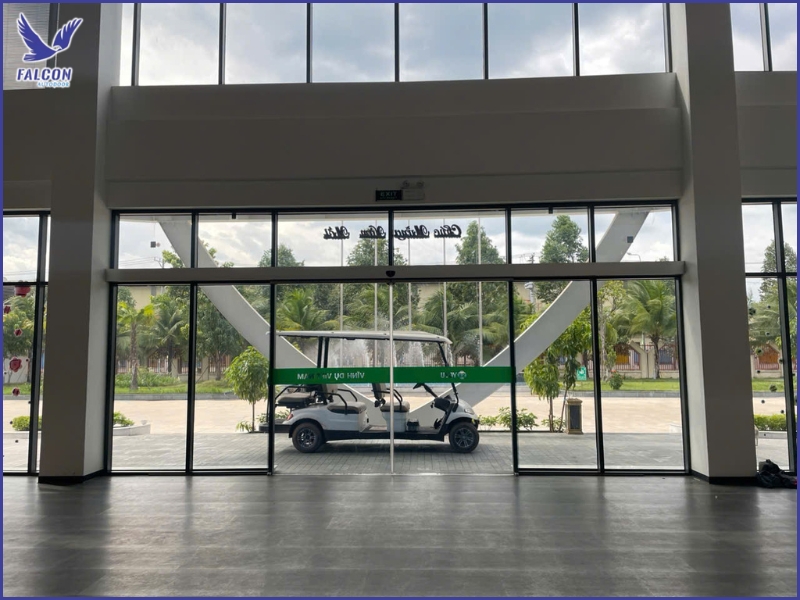
2. Comparison of sliding, swing, and revolving doors
Each door type offers a distinct mix of convenience, space needs, aesthetics, cost, and upkeep. Comparing them side by side clarifies trade-offs and helps you choose a system that fits your operational goals today and remains practical over the long term.
|
Criteria |
Automatic sliding door |
Automatic swing door |
Automatic revolving door |
|
Convenience & speed |
High |
Medium |
High |
|
Space requirement |
Low |
Medium |
Large |
|
Aesthetics & elegance |
Good |
Moderate |
Excellent |
|
Investment cost |
Medium |
Low |
High |
|
Maintenance & operation |
Easy |
Easy |
Complex |
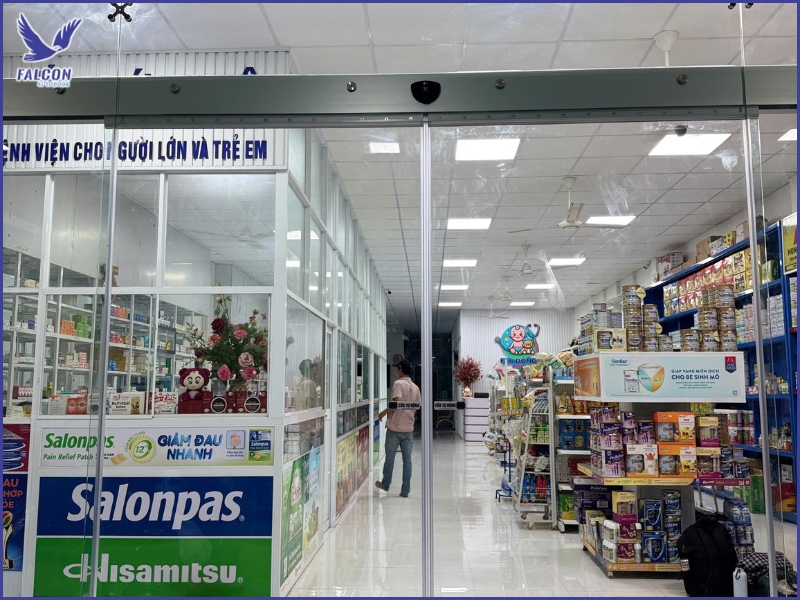
3. Key criteria for choosing the right automatic door
Selecting the right system means balancing building constraints, people flow, usage intent, and budgets. By evaluating these criteria methodically, you can align comfort, safety, and aesthetics while keeping total cost of ownership in check.
3.1 Building characteristics
Consider entrance width, ceiling height, façade design, and adjacent circulation paths. Sliding doors excel where you need broad, barrier-free openings without intruding into walkways. Swing doors suit standard-width portals and retrofits that benefit from a familiar look. Revolving doors need a prominent, well-proportioned location to accommodate the drum and canopy and they shine where the entrance is a design focal point. Matching the door’s physical requirements to your architecture avoids compromises later.
3.2 Traffic volume
Map your traffic patterns by time of day and season. Hospitals, supermarkets, and transit nodes benefit from sliding doors that handle frequent cycles with minimal delay. Offices, clinics, and residential lobbies with moderate flows often favor swing systems for simplicity and cost control. When you want a steady stream with environmental separation think hotel lobbies and flagship stores revolving doors maintain comfort while managing throughput gracefully.
3.3 Purpose of use
Clarify priorities: Is energy conservation critical? Is brand image paramount? Is touchless access for hygiene a must? Commercial spaces often emphasize aesthetics, throughput, and durability, pushing the decision toward sliding or revolving systems. Public facilities prioritize safety, reliability, and accessibility often satisfied by swing or sliding doors with robust sensor packages. For homes and small offices, ease of use and budget efficiency typically favor swing or compact sliding solutions.
3.4 Budget and maintenance strategy
Account for both initial investment and lifecycle costs. Swing doors usually win on upfront price and straightforward service. Sliding doors deliver a balanced mid-tier cost with widely available parts and technicians. Revolving doors cost more to purchase and maintain but can reduce HVAC losses, which may offset operating expenses over time. A realistic maintenance plan clean tracks, calibrate sensors, check drives extends life and prevents costly downtime regardless of type.
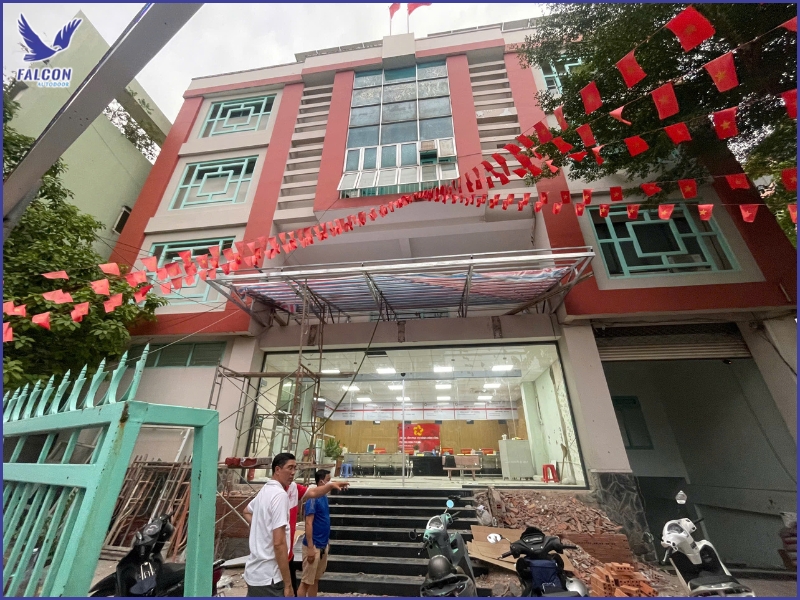
4. Which automatic door is right for your project?
With the comparisons in mind, translate them into practical recommendations. The “best” door is the one that harmonizes with your space and use case while supporting your brand and operational goals.
4.1 Small spaces or narrow entrances
When floor area is tight or corridors are busy, automatic sliding doors maximize usable space by eliminating the swing arc. Telescopic variants widen the opening without enlarging the structural clear width, which is useful in retrofits. In compact offices, schools, or residential buildings where budget and simplicity matter, automatic swing doors are also a smart choice especially when paired with touchless triggers for accessibility and hygiene. Both options maintain flow without crowding the approach.
4.2 Commercial projects with heavy traffic
Shopping centers, hospitals, airports, and supermarkets demand quick, consistent cycling and generous clear openings. Automatic sliding doors are built for this rhythm, accommodating carts, wheelchairs, and two-way pedestrian streams. With robust operators, durable rollers, and high-sensitivity sensors, they maintain uptime while protecting users. Integrate access control where needed and consider redundant safety sensors in pediatric or elder-care contexts for extra assurance.
4.3 Hotels and premium buildings
When the entrance must convey prestige and preserve interior comfort, automatic revolving doors set the tone. Their continuous vestibule minimizes drafts and dust, stabilizes lobby temperatures, and reduces HVAC energy loss benefits that guests feel immediately. Pair with high-clarity glass, refined metal finishes, and precise speed control to deliver a calm, welcoming arrival. For secondary entrances or service corridors, complement the main revolving door with sliding systems to handle peak flows and logistics efficiently.
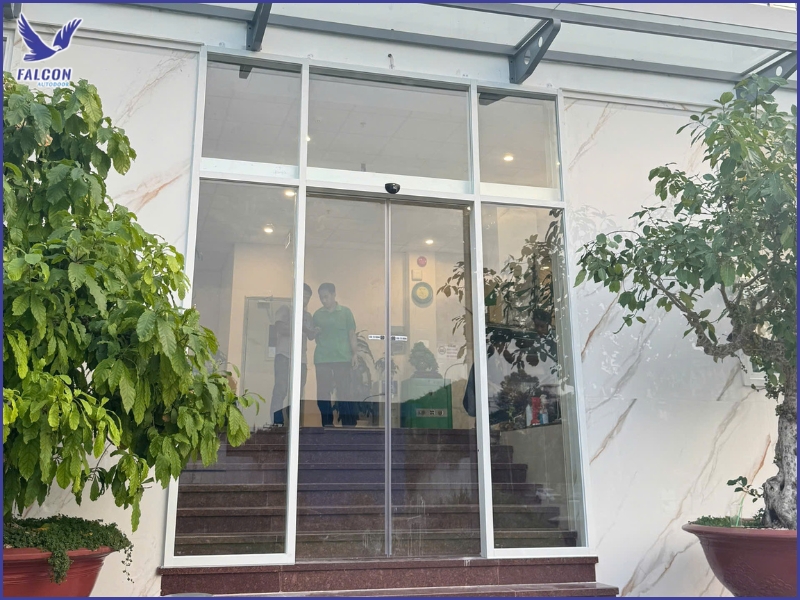
5. Thuy Linh Long - A trusted supplier of Falcon automatic doors
Selecting the right partner is as important as selecting the door type. Quality products, precise installation, and dependable aftercare ensure your investment performs as promised from day one and for years to come. As an authorized distributor of Falcon automatic doors in Vietnam, Thuy Linh Long provides end-to-end support, aligning technical performance with architectural vision and budget.
5.1 Genuine Falcon products
All Falcon doors and accessories supplied by Thuy Linh Long are sourced directly with complete documentation of origin and compliance. The portfolio spans compact sliding systems, robust swing operators, and premium revolving solutions each designed to meet international standards for safety, durability, and aesthetics. With multiple finishes, glazing options, and control integrations, we tailor the specification to your brand and environment.
5.2 Professional installation service
Our technicians conduct thorough site surveys to capture structural conditions, clearances, and power/data routes before work begins. We then issue a detailed plan covering model selection, mounting, sensor placement, and commissioning steps to avoid surprises. During installation, workmanship follows strict procedures: accurate framing, operator alignment, sensor calibration, and multi-cycle testing. The result is a quiet, smooth, and safe entrance that meets specification and schedule.
5.3 Reliable warranty and maintenance policy
Every project includes transparent warranty terms and a recommended preventive maintenance program. Routine service cleaning tracks, verifying torque and speed profiles, revalidating sensor ranges keeps doors performing at peak efficiency while prolonging component life. Our responsive support team provides on-site assistance, spare parts, and training so your staff can operate the system confidently day to day.
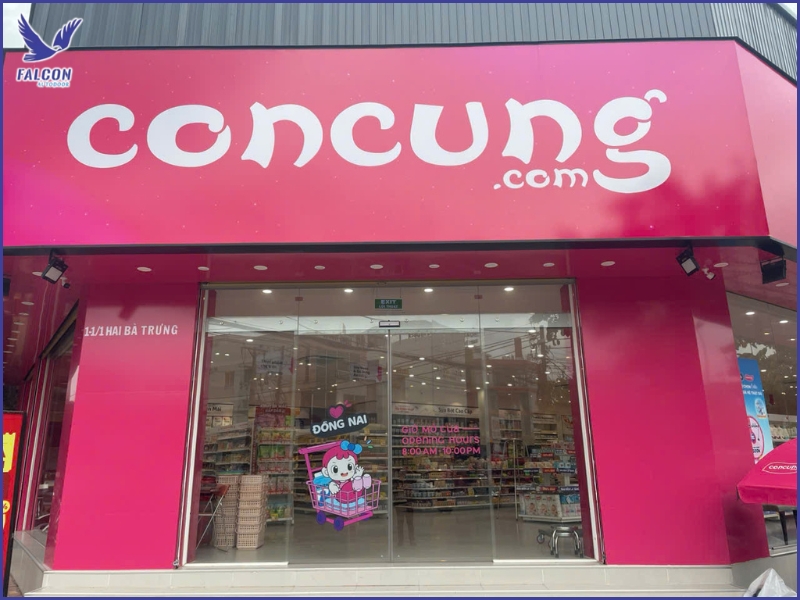
If you are weighing automatic sliding, swing, or revolving doors and want a recommendation grounded in your site conditions, contact Thuy Linh Long for a tailored consultation. We provide genuine Falcon products, disciplined installation, and clear pricing so your entrance looks refined, moves people efficiently, and stands the test of time.
THUY LINH LONG SERVICES TRADING COMPANY LIMITED
DISTRIBUTOR
Address: 243D Vuon Lai Street, Phu Tho Hoa Ward, Tan Phu District,
Ho Chi Minh City, Vietnam.
Tel: +84 28 22497999
E-mail: cuatudong24h@gmail.com
SUPPLIER
KUM YANG MATERIALS CO.,LTD
Address: 124-60, Myeongdong-ro, Hallim-myeon,
Gimhae-si, Gyeongsangnam-do, 50851, Korea.
Tel: 82-55-345-8380










